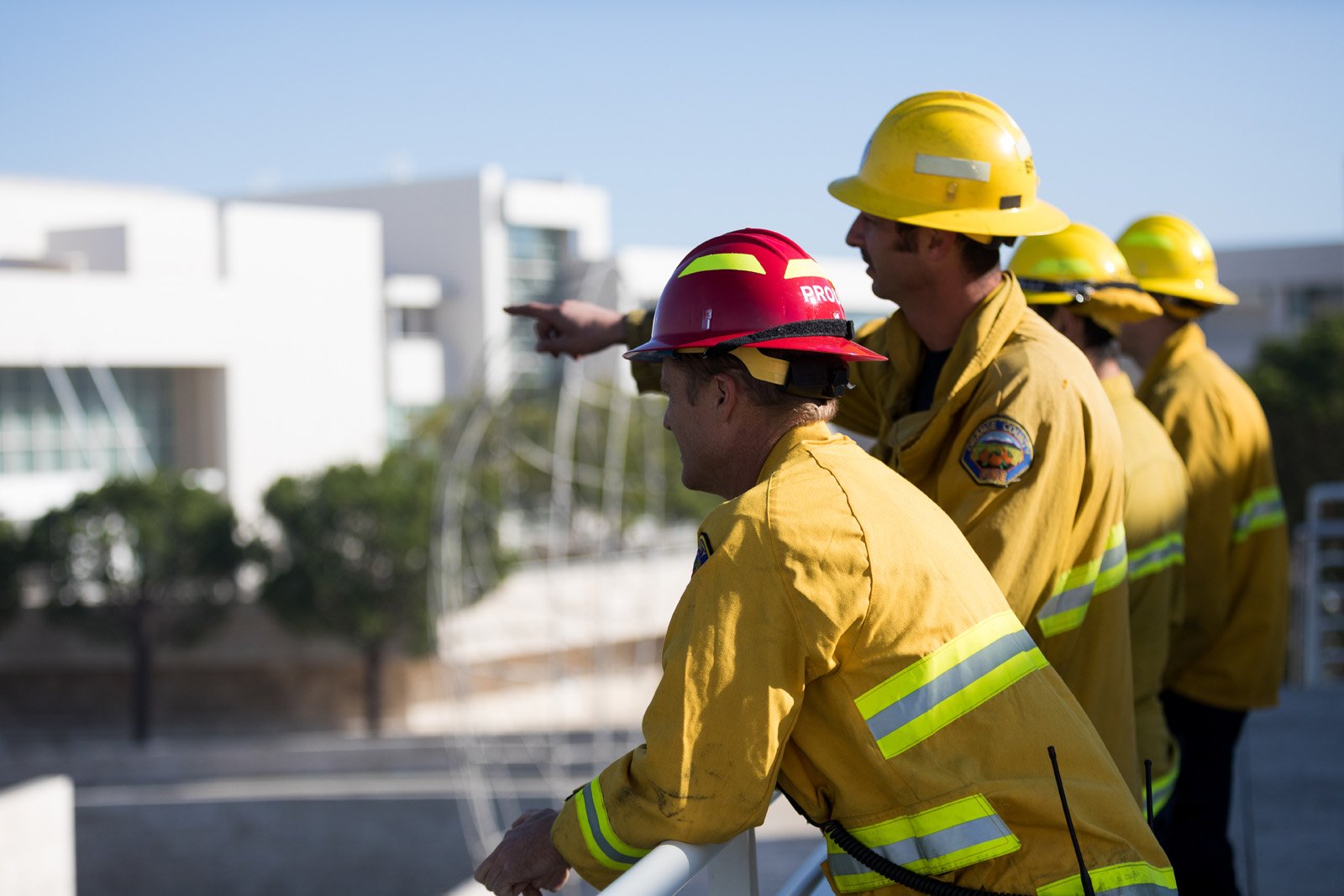
Threatened by wildfires just north of Los Angeles, the J. Paul Getty Museum has closed its doors to the public to make way for firefighters. The blaze, known as the Getty fire, ignited at about 1:30 a.m. on Monday morning.
It was only 5 percent contained as of last night, having burned some 600 acres, despite the best efforts of more than 1,100 firefighters. Museum staff were told to work from home Monday, when the museum is normally closed to the public.
Today’s closure “is mostly to give firefighters the room to continue fighting the fire without bringing more people and cars into the area,” a Getty representative told artnet News in an email, adding that so far the museum remains safe.
“There’s no longer an imminent threat to the Getty Center,” Peter Sanders, a Los Angeles Fire Department spokesperson, told the New York Times.
Even if the fire should reach the museum, there are no plans to evacuate the collection from the Richard Meier-designed building, which is made from cement and steel, with fire-resistant travertine stone walls and floors, as well as automatic fire doors.
Smoke from the Getty fire as seen from the Getty Center in Los Angeles. Photo courtesy of the J. Paul Getty Museum.
“The rooftops are stone to prevent embers from landing and igniting,” a museum spokesperson told CNN. Other precautionary measures include a state-of-the-art air system which has been deployed to hermetically seal the galleries and library archives from smoke. Sprinklers, which could cause water damage to the art, are only deployed as a last resort.
There is also a million-gallon on-site water tank for irrigation, and the grounds, planted with fire-resistant acacia shrubs and regularly pruned oak trees, were watered Monday morning, according to a museum statement. An ember landed on the Getty grounds during the 2017 Skirball fire, but the earth had been soaked ahead of time, and the flames were quickly put out by the fire department before they could spread.
“The safest place for the art and library collections is inside,” read post from the museum on Twitter. The museum is home to historical works by the likes of Rembrandt van Rijn, Vincent van Gogh, Claude Monet, Edgar Degas, and Édouard Manet, who’s the subject of the current exhibition “Manet and Modern Beauty” (through January 12, 2020).
A second, much larger fire in northern California, the Kincade fire, has led to evacuations in Sonoma County, including at the Charles M. Schulz Museum in Santa Rosa, dedicated to the “Peanuts” cartoonist. The fire has grown to 74,000 acres—twice the size of San Francisco—and is just 15 percent under control. Pacific Gas and Electric has turned off the electricity of some 587,000 customers out of fear of electrical fires.
The Schulz museum website notes that it “plan[s] to resume our regular hours on Wednesday, October 30, pending fire and evacuation conditions.”
Also in the evacuation zone is Santa Rosa’s Luther Burbank Center for the Arts which was perhaps the hardest hit by the 2017 fires. The main theater survived, but other buildings on the complex, including a classroom and auditorium, burned to the ground. The institution is closed through at least Wednesday, a representative told artnet News, ‘due to ongoing evacuation orders, air quality and public safety.”
The Schulz museum was closed for nearly a month after the 2017 fires, reopening only after an extensive cleaning. Because Schulz’s original artwork was all stored in glass cases, the historic cartoons weren’t damaged, but the museum’s HVAC system has an outside intake which filled the halls with smoke and ash.
“The first two weeks, the air quality was so poor we were closed even to staff,” the museum’s collections manager, Dinah Houghtaling, told artnet News last year. “We had to wear masks; it was hurting our eyes.” In anticipation of this year’s evacuation, staff installed carbon filters to try to maintain air quality in the museum, which will remain closed as long as evacuation orders are in place.
As this year’s fires continue to rage, with predicted winds of 50–70 miles-per-hour on Wednesday and Thursday, the National Weather Service has issued “red flag” warnings about critical weather and dry conditions ripe for wildfire in most of northern California and large parts of southern California.